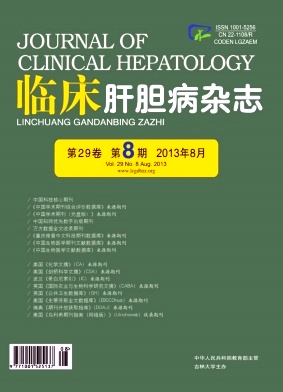|
[1]YAN F.Clinical efficacy of double-intervention treatment of ad-vanced liver cancer[J].J Clin Exp Med, 2011, 10 (16) :1282-1283. (in Chinese) 严峰, 双介入治疗中晚期肝癌的临床效果观察[J].临床和实验医学杂志, 2011, 10 (16) :1282-1283.
|
|
[2]LI HP, TAO JS, GAO B, et al.The expression and clinical signifi-cance of resistance gene in hepatocellular carcinoma[J].J Clin Hepatol, 2011, 27 (9) :972-975. (in Chinese) 李海平, 陶建蜀, 高波, 等.肝细胞癌中耐药基因的表达及意义[J].临床肝胆病杂志, 2011, 27 (9) :972-975.
|
|
[3]UEDA H, FUKUCHI H, TANAKA C.Toxicity and efficacy of he-patic arterial infusion chemotherapy for advanced hepatocellular car-cinoma[J].Oncol Lett, 2012, 3 (2) :259-263.
|
|
[4]MAEJIMA K, TOKUNAGA A, KIYAMA T, et al.Chemosensitivity test for5-fluorouracil and5-chloro-2, 4-dihydroxypyridine pre-dicts outcome of gastric cancer patients receiving S-1postoperatively[J].Gastric Cancer, 2010, 13 (4) :231-237.
|
|
[5]WU B, ZHU JS, ZHANG Y, et al.Predictive value of MTT assay as an in vitro chemosensitivity testing for gastric cancer:One institu-tion's experience[J].World J Gastroenterol, 2008, 14 (19) :3064-3068.
|
|
[6]TANG DP, ZHANG CQ, TANG K, et al.Serial chemosensitivity test for liver cancer chemotherapy[J].Chin J Oncol Prev Treat, 2009, 1 (1) :18-20, 23. (in Chinese) 唐东平, 张翠卿, 唐凯, 等.系列化疗药敏或耐药试验在肝癌化疗中的应用研究[J].中国癌症防治杂志, 2009, 1 (1) :18-20, 23.
|
|
[7]SARGENT JM.The use of the MTT assay to study drug resistance in fresh tumour samples[J].Recent Results Cancer Res, 2003, 16 (1) :13-25.
|
|
[8]BURSTEIN HJ, MANGU PB, SOMERFIELD MR, et al.American So-ciety of Clinical Oncology clinical practice guideline update on the use of chemotherapy sensitivity and resistance assays[J].J Clin Oncol, 2011, 29 (24) :3328-3330.
|
|
[9]CHEN W, DENG J, YANG XJ, et al.The levels of TNF-α, sIL-2R and VEGF in patients with primary hepatic carcinoma after double intra-arterial infusion of anti-cancerous agents[J].J Clin Hepatol, 2010, 26 (2) :203-204, 209. (in Chinese) 陈卫, 邓俊, 杨小娟, 等.肝癌双灌注介入治疗后血清TNF-α、sIL-2R以及VEGF水平的变化与预后相关[J].临床肝胆病杂志, 2010, 26 (2) :203-204, 209.
|
|
[10]ZHENG JL, LIANG LJ, HU WJ, et al.Distribution of5-FU in rat plasma and liver tissue after local5-FU infusion[J].J South-ern Med Univ, 2008, 28 (5) :823-827. (in Chinese) 郑惊雷, 梁力建, 胡文杰, 等.区域性灌注化疗时5-FU的血液和肝脏组织药物浓度分布特征[J].南方医科大学学报, 2008, 28 (5) :823-827.
|














 DownLoad:
DownLoad: